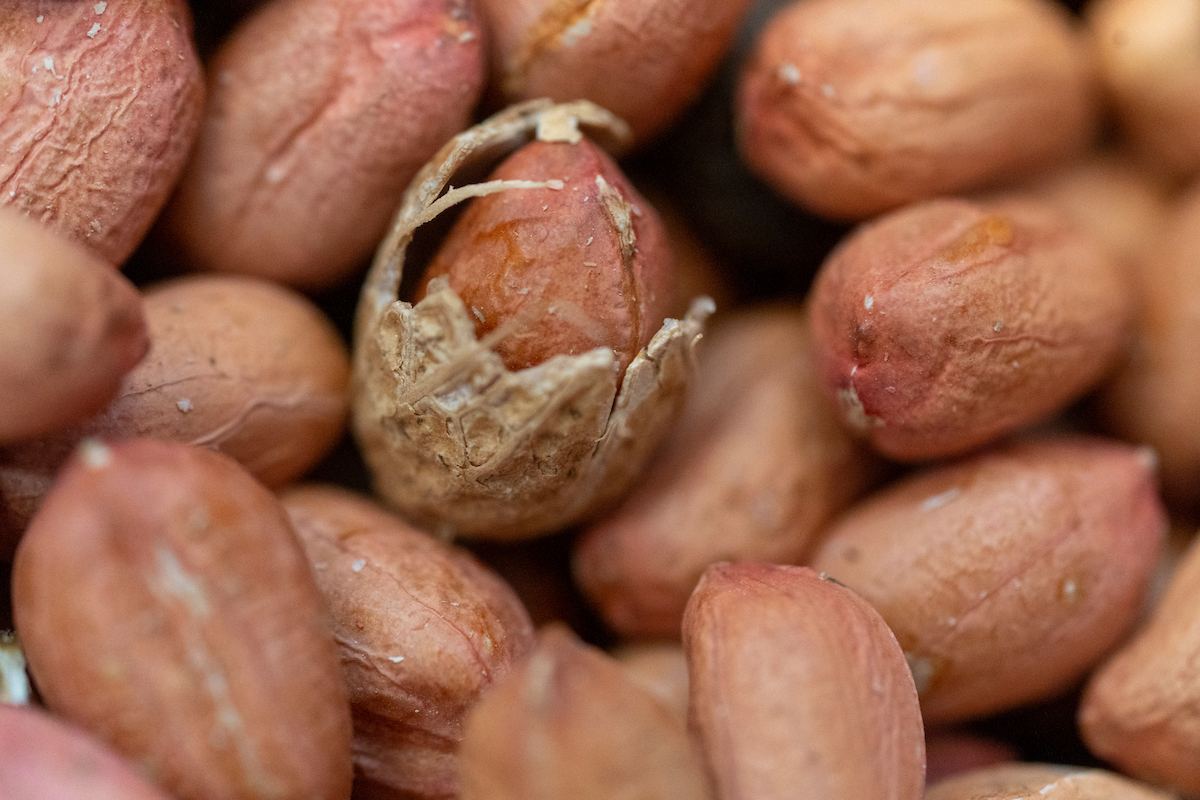Texas A&M AgriLife to develop market for high-oil peanuts
Peanut breeders establishing new opportunity to support U.S. growers
The growing market for peanuts isn’t in candy bars or sports stadiums but in cooking oil and renewable fuel. A Texas A&M AgriLife team is exploring avenues to help develop this new pipeline for producing high-oil peanuts.

Through a U.S. Department of Agriculture National Institute for Food and Agriculture three-year, $499,000 grant, Texas A&M AgriLife Research will lead the development of high-oil peanut cultivars and explore the economics of establishing the high-oil peanut market.
“We will be working with both growers and industry partners on developing economic models for the establishment of a totally new industry,” said John Cason, Ph.D., AgriLife Research peanut breeder at the Texas A&M AgriLife Research and Extension Center at Stephenville. “They will help us identify the differences in the value of edible versus oil peanuts and find key choke points that must be addressed to create the new value chain.”
Building on excellence
The team has already collaborated with Chevron Technical Center to research the ability to use peanut oil as a source for lower-carbon-intensity fuel.
“Investigations into both of these potential markets reflect the agricultural sector’s need to diversify and innovate in response to shrinking profits and increasing environmental concerns,” Cason said. “Peanut oil presents a promising opportunity both as a differentiated cooking oil and a renewable energy source.”
G. Cliff Lamb, Ph.D., director of AgriLife Research, Bryan-College Station, said this grant and the work with Chevron Technical Center give AgriLife Research scientists a chance to develop peanuts that have a greater oil content and are better adapted to dryer climates — ultimately creating a more resilient agricultural system.
“This project takes the entire agricultural value chain into account, using leading-edge research and innovation to create an abundant, affordable and high-quality product that protects natural resources, improves our production systems and supports economies in Texas and beyond.”



Beginning the groundwork
The research project focuses on creating high-oil peanut varieties, assessing their economic viability, and working to expand the peanut oil market, benefiting both growers and consumers.
Cason said the team is field-testing normal and high-oleic-content breeding lines that vary from 55%-57% oil content. Several of these lines have been tested under irrigated and rainfed conditions for four years and show potential as commercial cultivars.
Early generation materials produce high oleic oil content, root knot nematode and Sclerotinia blight resistance as well as up to 62% oil content, compared to 48% in conventional cultivars.
“Our intention is to continue developing these lines with a focus on low-input sustainable production practices,” Cason said.
Goals on the road toward high-oil peanut markets
If a new peanut oil market is to be developed, there is a critical need for new cultivars that have higher total oil content as well as a rigorous economic analysis to ensure a viable market in the future, Cason said.

Activities for success will include developing a national survey to understand the consumer’s willingness to use peanut oil and creating models and budgets for peanut-based cooking oil and renewable energy production in Texas and across the U.S.
“We’ve already identified promising genetic markers that will help us select for peanuts with high-oil content and pest resistance,” Cason said.
Next, Cason said the team will focus on validating these markers to develop the high-oil breeding line. By using near-infrared spectroscopy, a non-invasive tool that uses light to measure a sample, and an algorithm programmed to interpret the results, the researchers can select for oil content at speeds of up to 30 seeds per second.
Cost savings for an oil market
Peanut markets devoted solely to crushing for oil, meal and other coproducts should begin with a blank slate to determine what cost reductions are achievable, Cason said.
“We know the value of traditional edible peanuts is substantially higher than the value of peanuts used strictly for crushing right now, but with higher oil content, that value could be significantly increased,” he said.



The team
AgriLife Research peanut breeders Cason, an associate professor; Charles Simpson, Ph.D., professor emeritus, Stephenville; and Mark Burow, Ph.D., professor, Lubbock, all in the Department of Soil and Crop Sciences.
Department of Agricultural Economics faculty Luis Ribera, Ph.D., Texas A&M AgriLife Extension Service economist and director of the Center for North American Studies: Marco Palma, Ph.D., professor and interim associate director for responsive agriculture in the Texas A&M AgriLife Institute for Advancing Health Through Agriculture; and Pancho Abello, Ph.D., AgriLife Extension economist and assistant professor, Texas A&M AgriLife Research and Extension Center at Vernon.
Outside contributions will come from Bob Parker, retired president and CEO of the National Peanut Board, who will serve as a consultant, and Marshall Lamb, Ph.D., a USDA National Peanut Research Laboratory supervisory research food technologist in Dawson, Georgia, to represent the southeastern region of the U.S.





